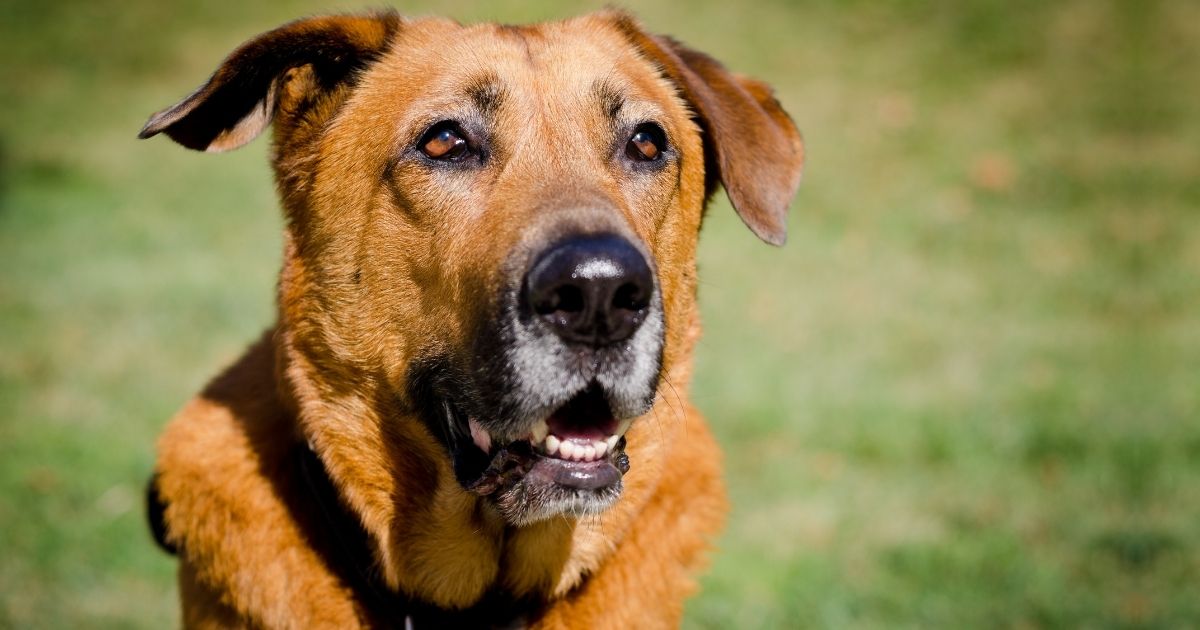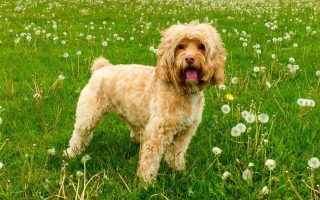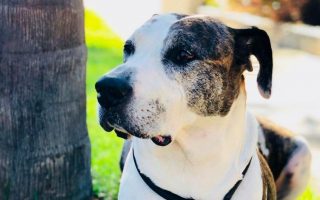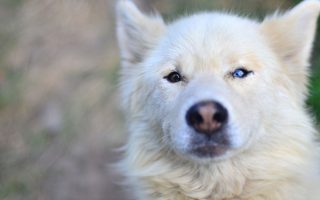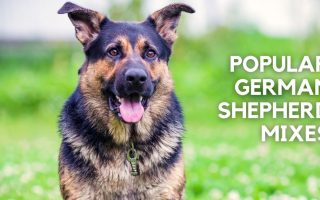The Bloodhound German Shepherd mix is a cross between two well-known police dog breeds, the German Shepherd and the Bloodhound.
It is a rare mix and not much is recorded. However, if there’s one thing we know for sure, it will possess a strong sense of smell.
Both the German Shepherd and Bloodhound are known to trail scents to locate missing people and even sniff out drugs, so you can count on the offspring to be a trail master.
Other than that, we can still piece together information about this mix by studying the parent breeds.
Through the German Shepherd and Bloodhound, we can figure out the appearance and personality of this mixed breed, as well as what you need to care for it and tips on locating.
The result of that analysis is what you stand to gain from this article.
Bloodhound Shepherd Mixed Breed Information
| Height | 23 to 27 inches |
| Weight | 75 to 110 pounds |
| Lifespan | 10 to 13 years |
| Coat | Thin, loose or medium, double |
| Colors | Black and tan, silver and tan, black, black and white, red, brown |
| Temperament | Active, reserved, stubborn, loyal |
| Ideal For | Family with space, active owners, experienced pet parents |
| Hypoallergenic | No |
| Breed Recognition | None |
| Puppy Price | $600 – $1200 |
German Shepherd Bloodhound Mix Puppy Characteristics
| Health | High |
| Grooming | Low to medium |
| Friendliness | Medium |
| Energy | High |
| Trainability | Medium |
The Parent Breeds
Bloodhound
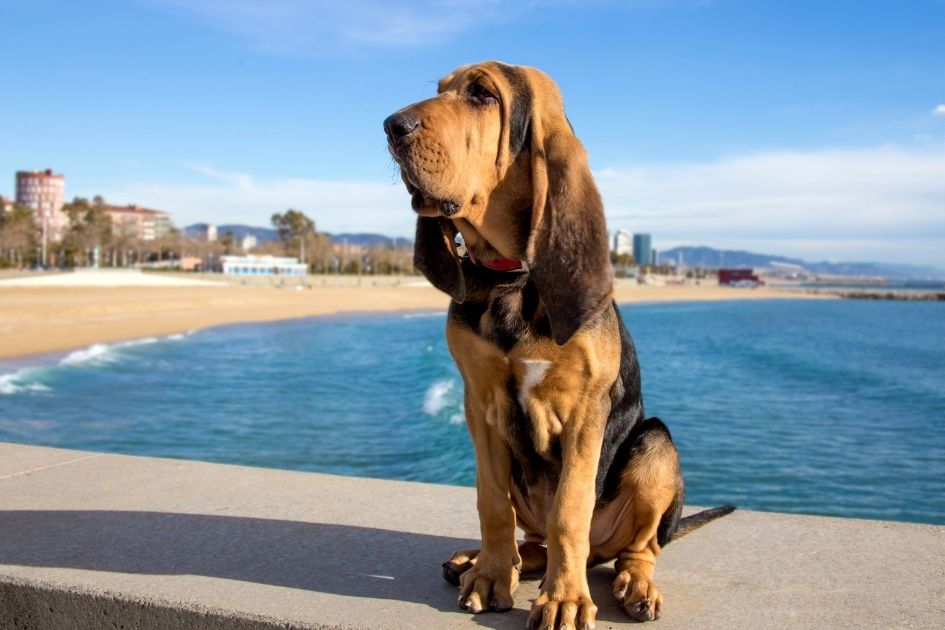
Known as one of the earliest police dogs and for its role in the capture of Jack the Ripper, the Bloodhound has European roots.
Its ancestry goes as far back as the 1st century A.D. till it began evolving in medieval Europe to the modern Bloodhound we know today.
The Bloodhound came into America in colonial times.
It enjoyed a fair amount of popularity till the civil war period when Harriet Beecher Stowe’s Uncle Tom’s Cabin affected its reputation.
Despite that, the American Kennel Club recognized the breed in 1885.
The Bloodhound is a medium to large size breed that weighs 80 to 110 pounds and grows between 23 and 27 inches tall at the shoulder.
It has a thin and loose coat that sheds occasionally. Its main colors are red, black and tan, with liver and tan.
Common physical features include facial wrinkles, drooping ears, and sad eyes.
Far from being the vicious dog breed movies and books paint it out to be, the Bloodhound is a lover of people and shows affection, though it can be shy and also stubborn during training.
German Shepherd
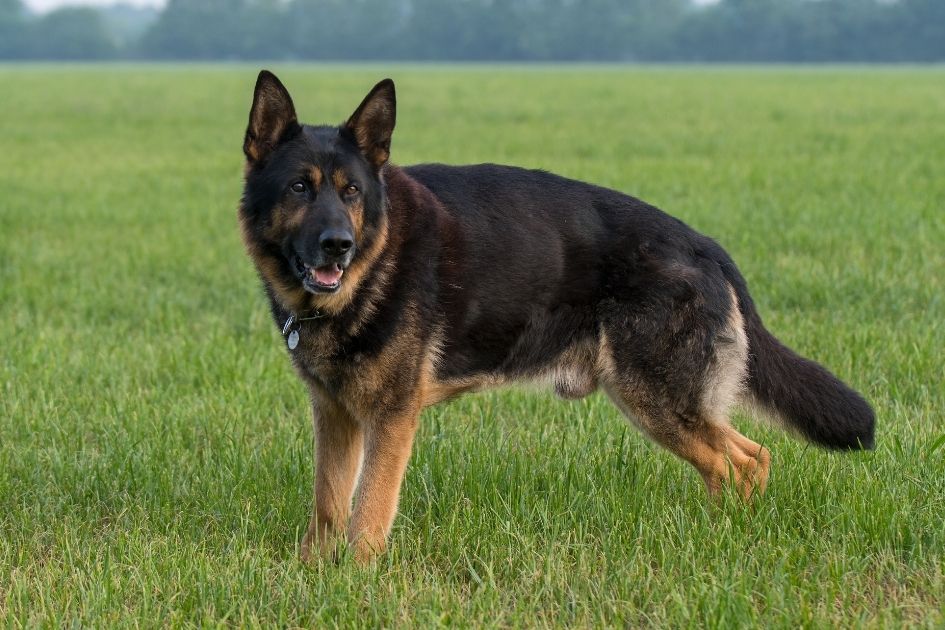
The German Shepherd is as much a police dog as the Bloodhound and is popular for it.
It isn’t as old as the Bloodhound, however. Originating in 1899, it is considered relatively new.
It owes its existence to a German captain named Max Von Stephanitz.
The German Shepherd was already in the United States before the 1st World War, but it was after that warfare that it caught the attention of Americans.
It got recognized by the American Kennel Club before World War in 1908.
In a bid to make it “less German”, the AKC renamed it to the Shepherd Dog in 1917. In 1931, the AKC reverted to the former name.
The German Shepherd Dog (GSD) is medium-sized and slightly smaller than the Bloodhound.
It weighs between 75 and 95 pounds with a height range of 22 to 26 inches.
It has a double coat that’s usually of medium length, though some GSDs are long-haired.
Aloof with strangers but loyal and friendly with the family, the GSD can play the role of a companion and guard dog.
Its high obedience rate makes it suitable for first-timers, but training shouldn’t be neglected.
Facts About the Bloodhound German Shepherd Mix You Should Know
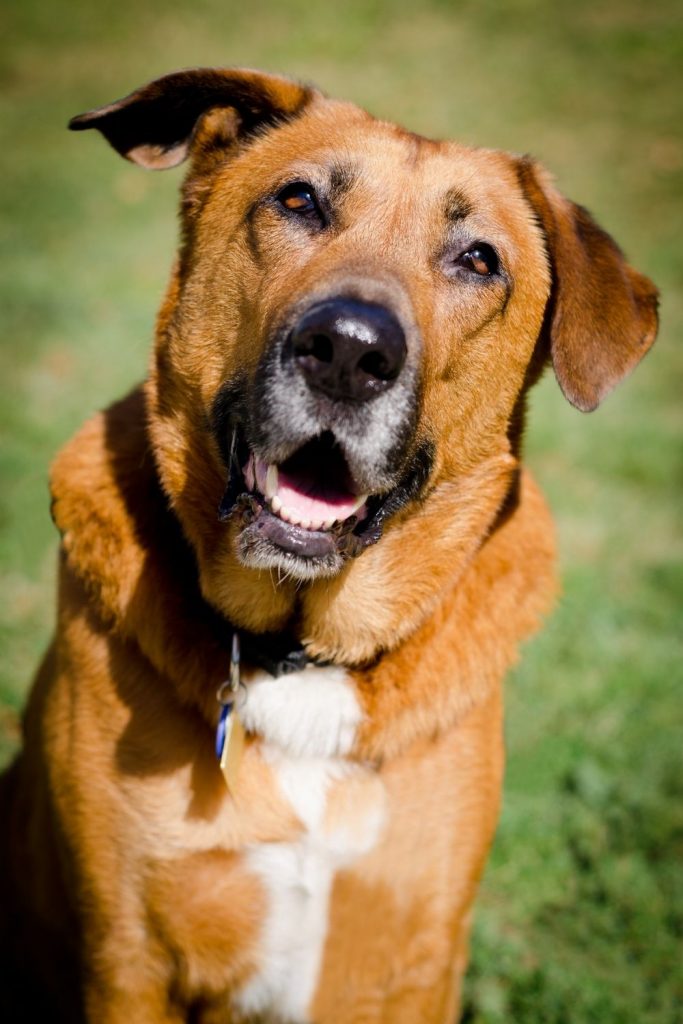
1. Bloodhound Shepherd mixes are not hypoallergenic
Both the German Shepherd and the Bloodhound are not advisable for allergy sufferers.
The German Shepherd sheds a lot and dog hair is an allergen. The Bloodhound sheds less, but it drools and smells.
Either way, the offspring isn’t hypoallergenic.
2. It has a strong sense of smell
The mix, like its parents, can pick up scents from a long distance and follow it up.
It is an excellent trailer and would usually be seen sniffing around when it has nothing else to do.
3. They are not advisable for new pet parents
The German Shepherd can be a good first-time dog, but the Bloodhound is known for its stubbornness.
You can’t tell if your mixed dog will get the stubborn gene or not, but it is best to be safe and go for a more agreeable breed.
4. It has no standard name
Because it is rare and unknown, the German Shepherd Bloodhound mix is unrecognized and doesn’t have a name it is often referred to as.
One can decide to call it the Bloodhound Shepherd, however.
5. It is active and intelligent
Both the German Shepherd and the Bloodhound are working dogs and require a high level of exercise.
They are also very intelligent and need mental challenges. These apply to the offspring too.
Appearance of the Bloodhound Shepherd Mix
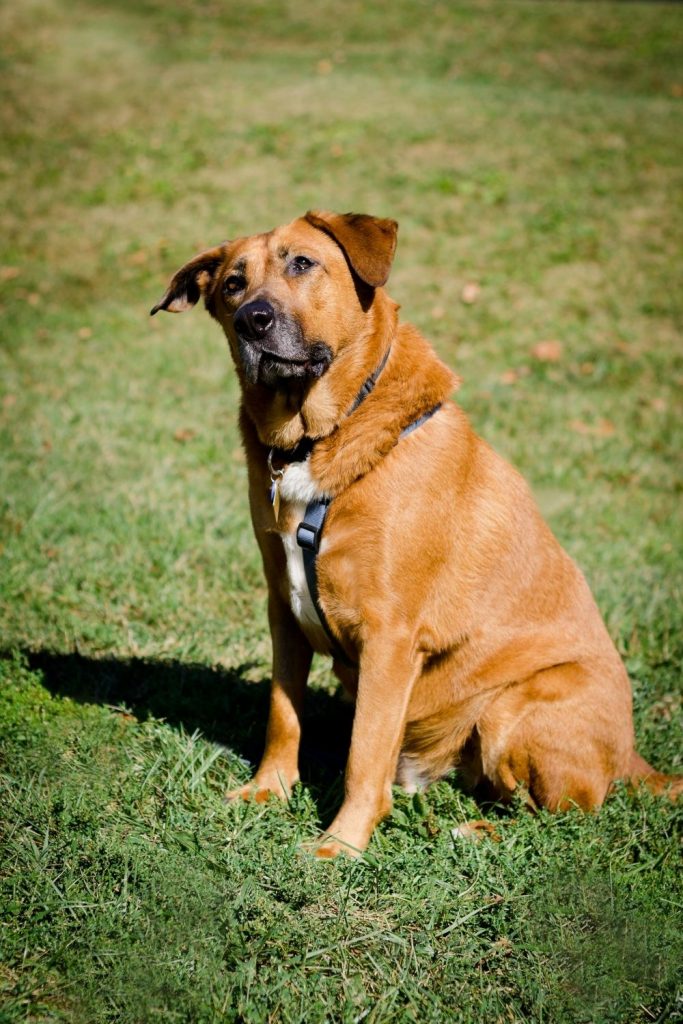
General Appearance
The Bloodhound and German Shepherd have their distinctive looks, and this should be kept in mind when considering this mix.
As the puppy grows into an adult, you’re likely to get some interesting combinations.
Don’t expect two Bloodhound Shepherd mixes to look the same as there is no standard.
Only with calculated guesses can we attempt to predict its looks.
The mix might get the wrinkles and folds of the Bloodhound or the hairier skin of the German Shepherd.
Its ears could either be erect or drooping, the eyes sharp or lazy, the frame lean like the German Shepherd or broader like the Bloodhound.
Genetics is the major determinant of what the Bloodhound German Shepherd mix would look like.
Size
It is easier to predict the size as both parents are in the medium to large category.
This hybrid’s size usually falls in between those of its parents. It weighs up to 110 pounds and grows up to 27 inches.
Colors and Coat Type
The German Shepherd Bloodhound could either get the thin coat of the Bloodhound or the double coat of the German Shepherd.
The dominant gene often determines the coat type.
There is a variety of colors it can pick from, including black, red, brown, black and tan, and black and white.
Bloodhound German Shepherd Mix Temperament
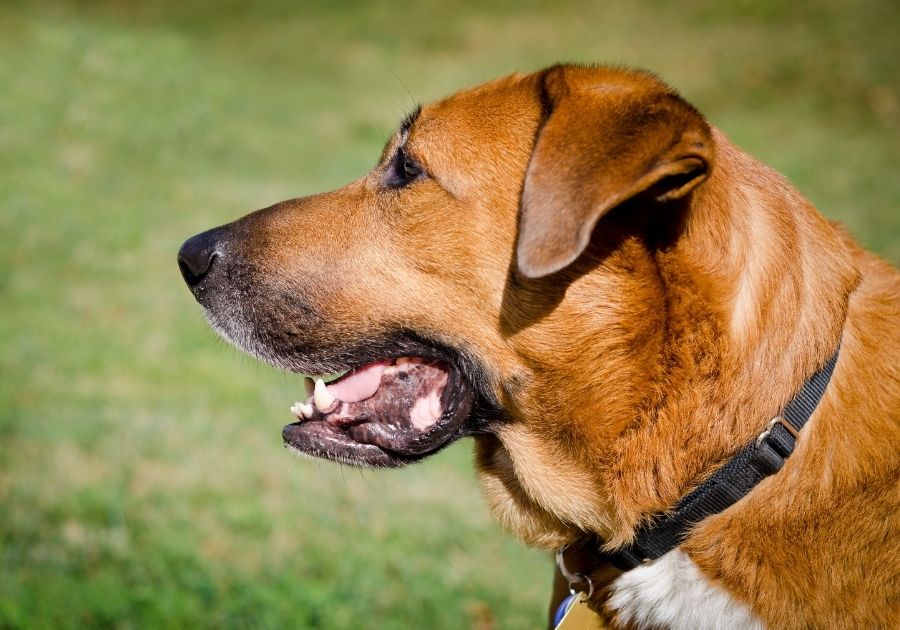
The Bloodhound Shepherd’s personality is shaped by the owner’s commitment and the parent breed’s genes.
For a mix this rare, you can only ascertain its behavior through that of its parent breeds.
From what we know about the German Shepherd and the Bloodhound, we can accurately state that the resultant crossbreed will be loyal to its family.
Its devotion will stay strong to those it loves, and it will protect them when need be.
With strangers, it might be reserved, especially as a puppy. Socialization can enable it to be more accepting of strangers.
It might also get the docile and sensitive nature of the Bloodhound, but that doesn’t change its activeness.
Regular exercise and activities are necessary to satisfy it.
A behavior you would have to get used to is its continuous sniffing, especially if it tilts towards the Bloodhound.
Even while on the leash, it would try to steer you towards a different direction if it picked up something interesting.
This behavior hints at its stubbornness and independent spirit which it might pick from the Bloodhound.
It may not always do what you want from it, so patience is required.
Are Bloodhound German Shepherd Mixes Good Family Dogs?
Like their parents, Bloodhound Shepherds can be good companions and family dogs to families that can accommodate them.
They’re good with kids and are tolerant of rough play—though this shouldn’t give your kids a free pass to doggy disrespect.
Not every family can cope with this dog mix, however. For some people, taking care of this mix can become a source of frustration.
Only with the ideal owner can it get to its full potential.
Are Bloodhound Shepherds Good With Other Dogs & Pets?
Both Bloodhounds and German Shepherd get along with other dogs when you introduce them early. The same applies to the mix.
Do not try to get an adult to flow with canines if it was not used to it.
It could also get along with pets like cats and some other rodents when well socialized.
How Much Does a Bloodhound German Shepherd Mix Puppy Cost?
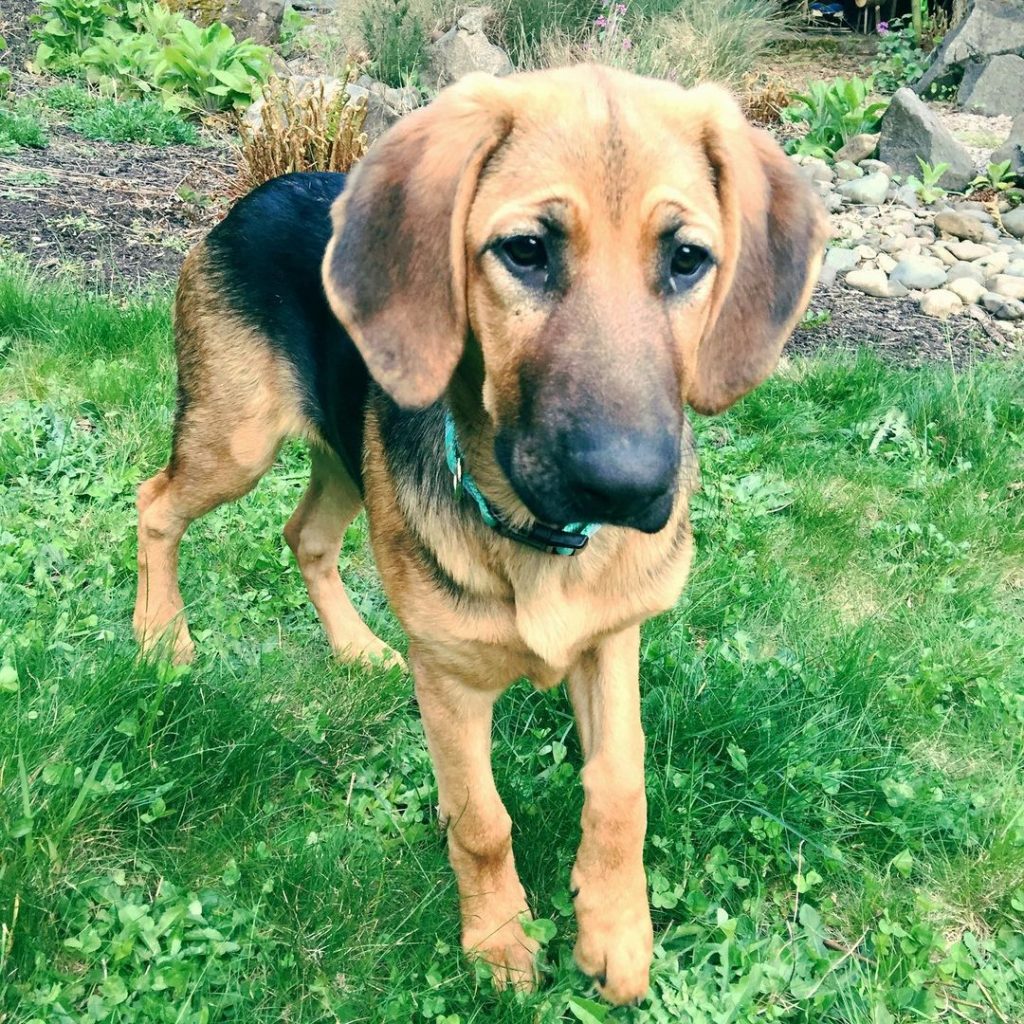
The Bloodhound Shepherd came from accidental breeding, which makes it difficult to find.
There are only a few breeders who specialize in designer breeds, and those prefer the popular ones.
Your only options are breeders that sell Bloodhounds or German Shepherd Dogs.
The estimated cost for a German Shepherd Bloodhound mix puppy is between $600 and $1,200.
It could be either higher or lower than this price range, and it often depends on the breeder, pedigree of the puppy, the health of the parent breeds, etc.
Make it your aim to shop only from a responsible breeder, regardless of price.
While a cheaper offer might seem more economical, keep an eye on the future.
The responsible breeder will be more willing to answer questions, show documents and give more proof that the puppy is healthy and well-bred.
The accidental breeding that brought forth this mix might also make some unwilling breeders and owners leave it at shelters.
You might have better chances of adopting this mix than buying it, and it is cheaper at well.
With $300, you can adopt a healthy Bloodhound Shepherd. Rescue shelters are sometimes more trustworthy than breeders and will answer your questions.
Figure out how the pup ended up there and if it is healthy in every way.
Bloodhound and German Shepherd Mix Food & Diet
The Bloodhound Shepherd mix can only be satisfied with a diet that’s meant for medium to large dog breeds.
It eats in big quantities, so you should measure its meal to avoid obesity. This mix can also suffer from bloating if it rushes its food. Teach it to eat slower.
It will benefit from a rich diet that contains all the necessary nutrients for its growth and nourishment.
Dry kibble is preferred, but you can supplement its diet with wet food to break the monotony.
Let the diet be free of fillers or additives. It must be of high quality and contain a good amount of protein.
Besides that, the diet also needs a sufficient amount of fat, vitamins, minerals, vegetables, and some fruits.
Some fruits and vegetables are harmful to dogs, and you should steer clear of that.
The Bloodhound parent needs about 8 cups daily, divided into 2 meals.
The GSD needs about 3½ and 4½ meals a day, also divided into 2 meals.
The mix could fall somewhere in between or follow a particular parent. When in doubt, seek help from a veterinarian.
Bloodhound German Shepherd Mix Exercise
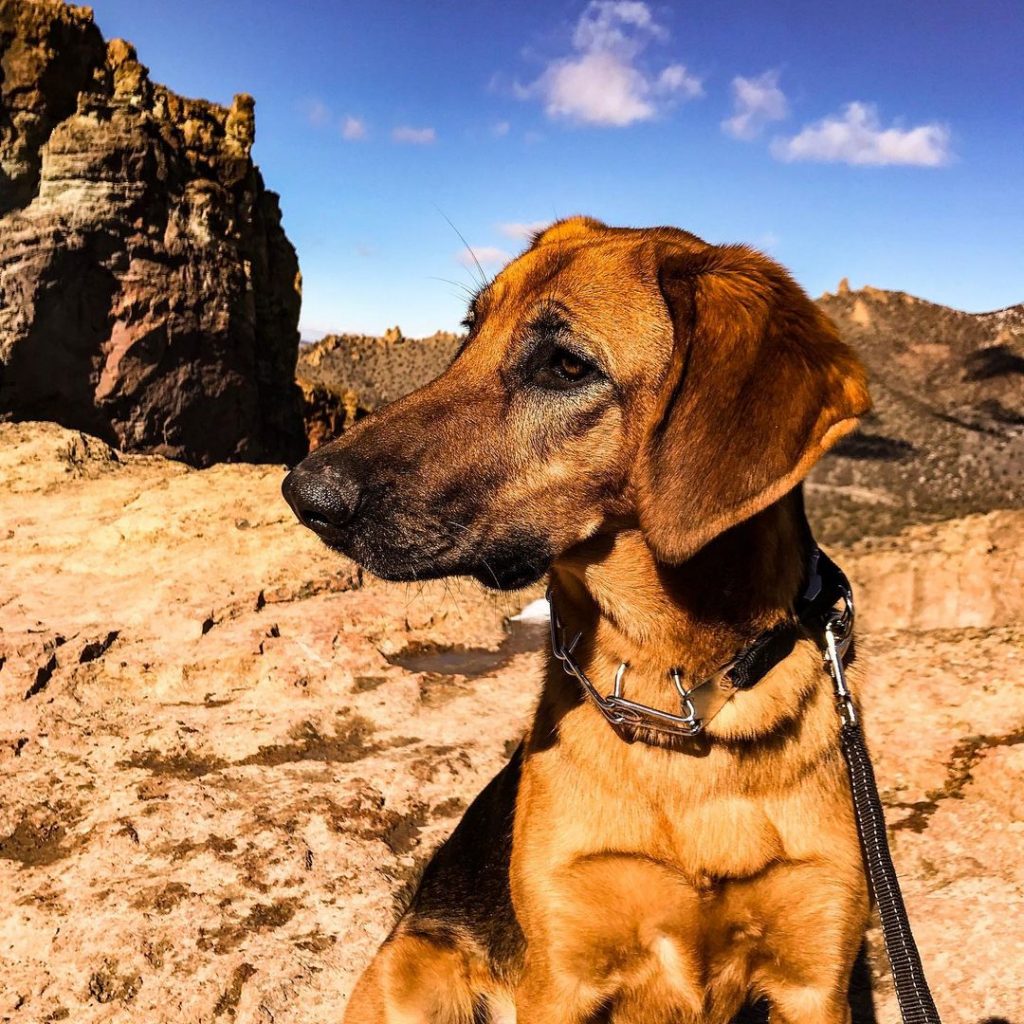
The lazy looks notwithstanding, exercise your Bloodhound mixed with German Shepherd as much as you would a worker dog breed.
It loves having something to do and will keep itself busy if it isn’t exercised.
Of course, that will be in ways you won’t like.
You have to live an active lifestyle before getting a Bloodhound Shepherd mix as a companion.
If you have a yard and energetic kids, then you won’t have any challenges in meeting this Mix exercise need.
Give it time to play with the kids till it uses up its energy and you should be good to go.
If you don’t have a yard or want to spice up your dog’s exercise routine, take it outdoors for a walk (with a leash).
It can also be your companion as you go jogging. Overall, it needs at least an hour of exercise as an adult.
The puppy can do with 10 minutes of minimal activities and should not be allowed to run, especially as this Mix is prone to hip dysplasia.
Seniors should be given low-intensive activities too.
Besides physical activities, mental stimulation is needed. Most of them are forms of training which we shall soon see.
Training this mix is easy, especially if it takes the personality of the German Shepherd.
With the Bloodhound gene, however, the game goes to a harder level.
The general rule of thumb for many dog breeds applies to this mix too. Start training it from a young age to override the stubborn tendencies it might have.
Early training is also a preventive measure against bad habits.
It might be tempting to wait till they grow up before you start training, but the downside of this is the difficulty you’ll face when you start.
The mix might also inherit the sensitivity of the Bloodhound, which makes harsh treatment and yelling affect it more than many other breeds.
Conversely, it responds to kind methods better. If you want to succeed at training this hybrid, positive reinforcement is the key.
When badly treated, it might retreat and refuse to co-operate further.
The mix will do well in obedience training because of its intelligence and the pleasing nature of the German Shepherd.
Teach it to respond to simple commands. Socialization and house training are some other important forms of training as well.
Grooming Your Bloodhound Mixed with German Shepherd
The grooming need of the Bloodhound Shepherd depends on the coat it gets from its parents.
The German Shepherd’s coat will require more brushing than that of the Bloodhound.
The former shed a lot too, so get a vacuum cleaner on standby. Brushing can be done daily or weekly as the case may be.
The Bloodhound drools and emits a particular odor that calls for extra attention once you discover these traits on the mix.
Bathing should be more regular than some other dog breeds, but not daily like humans. You should also be comfortable wiping off the slobber to keep it clean.
When the mix gets the floppy ears, know it will be more susceptible to an ear infection. You should also wipe excess wax and dirt.
As you clean, observe for symptoms like red spots, odor, or sores. Get it to the vet as ear infections can make the dog deaf.
Keep its teeth clean and its nails trimmed too.
Due to the Bloodhound’s sensitivity and dogs’ general aversion to being touched, start grooming this mix when it is a puppy.
Also Read:
How To Cut An Uncooperative Dog’s Nails (Pro Tips)
Bloodhound and German Shepherd Mix Health Problems
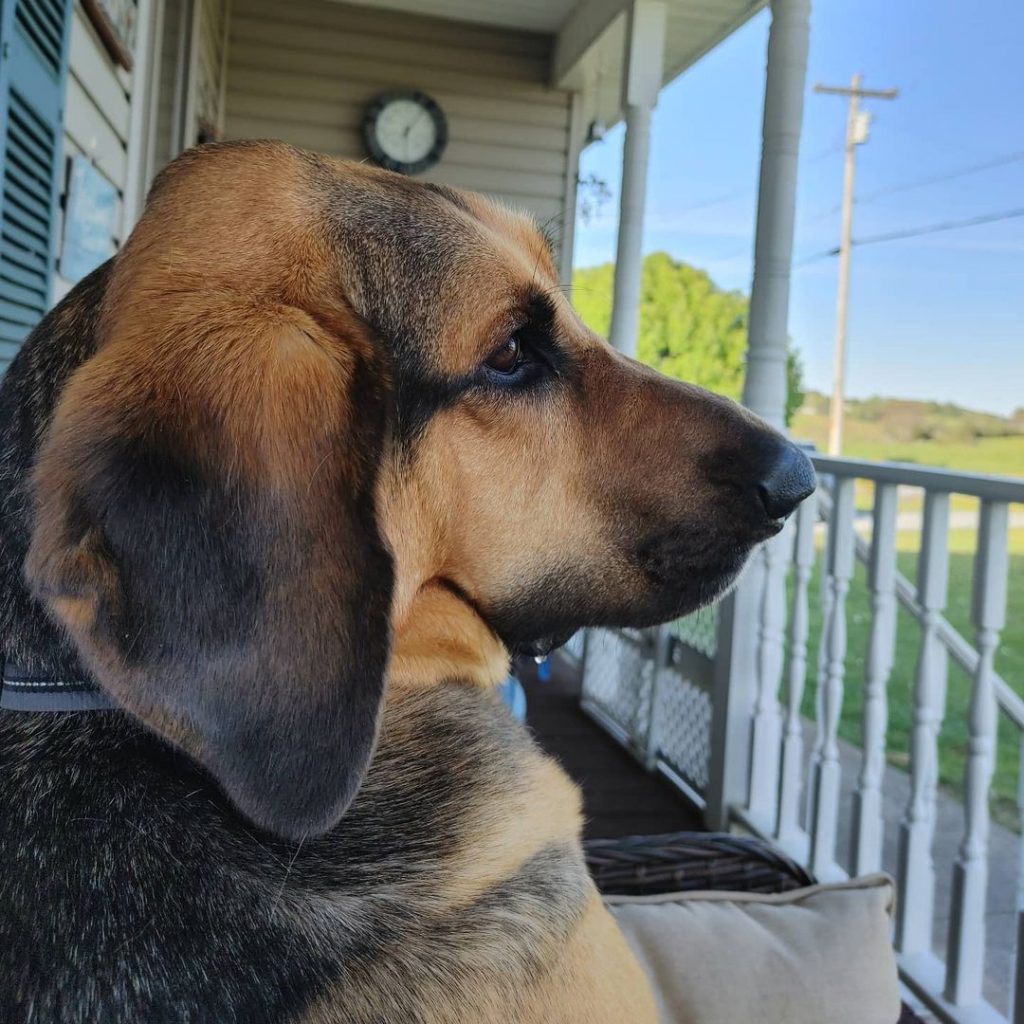
As a designer breed, the Bloodhound Shepherd tends to be healthier than its parents and other pure breeds.
It has a relatively long life span of 10 to 13 years and might live longer if well taken care of.
There isn’t much information on the medical conditions of this dog mix, but here are some it might inherit from its parents:
- Bloat: Bloating is a critical digestive issue that leads to swollen stomach when it is filled with gas, food, and fluids.
- Ear infections: The floppy ears of the Bloodhound are vulnerable to ear infections. The two common types are bacterial infection and fungal infection.
- Hip dysplasia: This occurs when the thighbone doesn’t fit well in the hip joint. It can lead to lameness.
- Skin issues: Some common skin conditions that can affect this Mix are bacterial infections, ringworms, reactions from allergies, and infestations from fleas.
- Arthritis: Arthritis is a joint condition that affects older dogs more and impedes movement.
- Fold dermatitis: Bloodhounds are prone to this because of their wrinkles. It is caused by friction and moisture that sticks in between the folds.
How big will a Bloodhound German Shepherd mix get?
Like its parents, this mix can be either medium or large. It gets as big as 110 pounds and grows up to 27 inches.
Are Bloodhounds aggressive?
Bloodhounds are sometimes thought of as aggressive because of how it is depicted in some movies and literary work.
However, this breed is not meant to be aggressive and is rather loving towards everyone.
What is the best mix for German Shepherds?
The German Shepherd is very popular, so it has been crossed with many other dog breeds.
One of the most sought-after mixes is the Golden Shepherd, a hybrid of the German Shepherd and the Golden Retriever.
Wrap Up
The first thought that often comes to mind when someone hears of the Bloodhound and German Shepherd mix is its sense of smell.
However, this hybrid is more than that. It is also a loyal companion, a playmate for kids, and a protector when need be.
Finding it can be difficult, and taking care of it has its cons, but it is worth it when you walk on the road with your devoted buddy, forging that human-canine friendship that adds a touch of beauty to one’s life.
Other Mixes You May Like:

